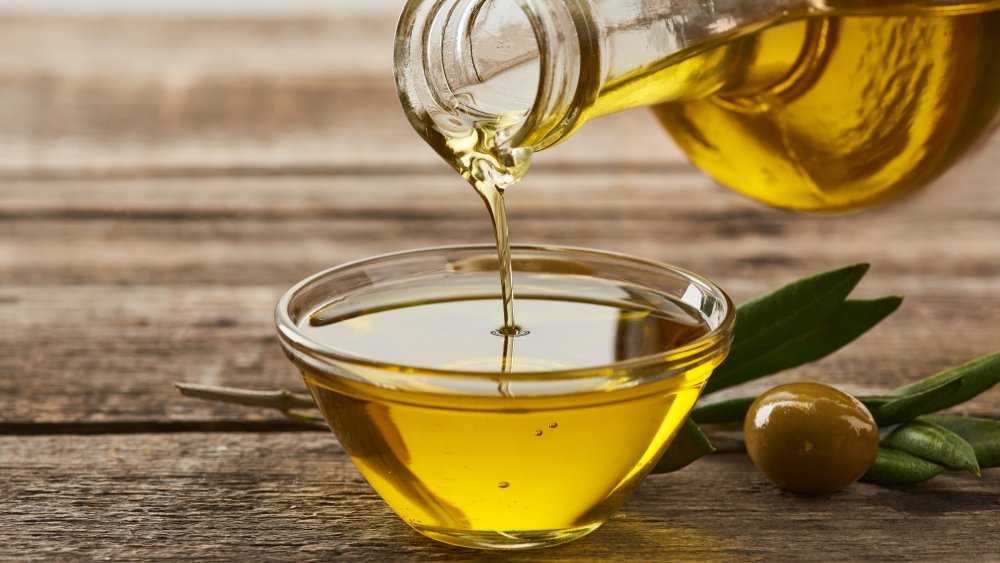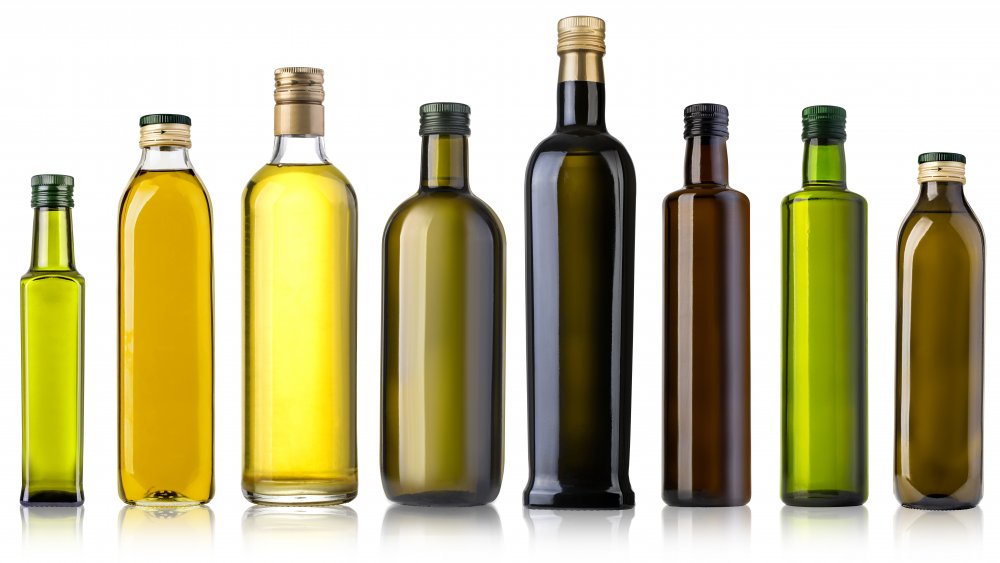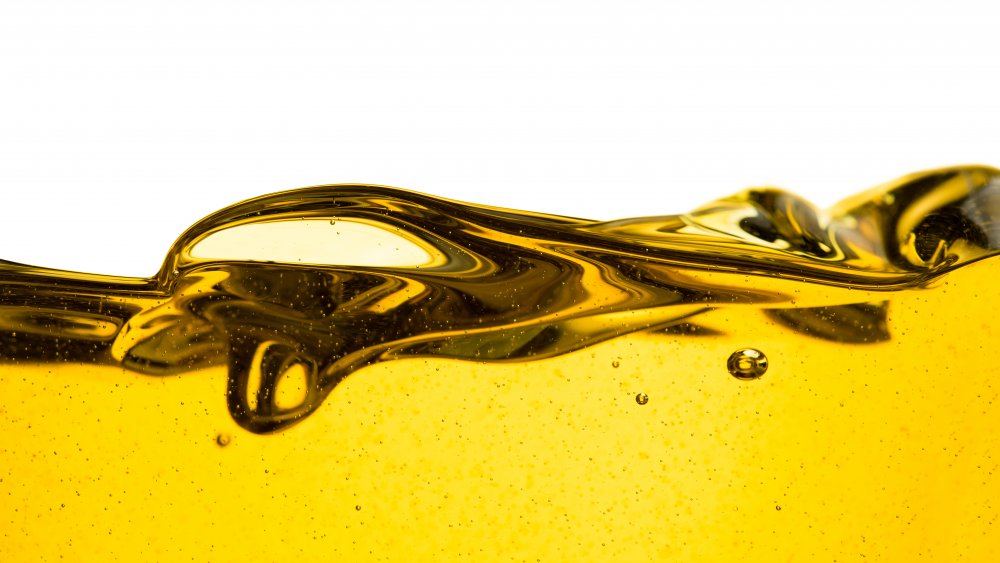Here's How You Can Tell If Your Olive Oil Has Gone Bad
With the number of recipes that call for olive oil, coupled with its cost, it might feel like a good idea to purchase olive oil in bulk; but beware, overbuying can end up wasting more money than was saved if you don't use your olive oil quickly enough or store it properly.
Rancidity is described by the Chicago Tribune as a process that occurs when oils oxidize. Parade notes that exposure to heat, light, or oxygen, can all lead to your olive oil becoming rancid — and that clock starts ticking when it is produced, not when you bring it home. They state that olive oil is a perishable item and will eventually go rancid no matter what, but if you handle and store it properly — well sealed in a cool, dark place — it should last for up to two years from the date it was bottled.
There are three forms in which olive oil can become rancid, according to Oliver & Grapely. These are microbial rancidity, oxidative rancidity, and hydrolytic rancidity. Microbial rancidity is caused when molds and other bacteria begin to dissolve fat through enzymes. Oxidative rancidity is when oxygen reacts with "free radicals" to break down unsaturated fatty acids, creating compounds that kick start rancidification. The last type, hydrolytic rancidity, is caused by water and lipids combining to form glycerol and fatty acids.
Can you get sick from using rancid olive oil by mistake?
FiveThirtyEight claims a big issue facing the olive oil community is that consumers do not really know what olive oil is supposed to taste like. They describe good flavors in olive oil, like pungent and fruity, as being often confused with bad flavors, like fusty and musty.
They claim the U.S. is a dumping ground for bad olive oil, because less-than-reputable producers know that many consumers in the U.S. market will not be able to tell the difference, and that in blind taste tests, many prefer low-quality olive oil over high-quality. They state that the reasons for this are twofold — that rancid olive oil is less bitter than fresh olive oil, and that "bad" olive oil is what many U.S. consumers grew up using, so it is what they believe olive oil should taste like.
While rancid oil does not smell or taste great, the good news is it will most likely not make you sick, according to Olive Oil Times.
How to tell if your olive oil has gone bad
There two ways to check if your olive oil has gone bad. The Daily Meal recommends you first test your oil by smell. This method requires you to pour some oil into a small cup and give it a big whiff. They describe the smell of rancid olive oil as unpleasantly sweet and reminiscent of Elmer's glue, and the stronger the smell, the older the oil is.
The second way to test your oil is to taste it. They suggest you do both methods, since many people who are unfamiliar with what olive oil is supposed to smell like will confuse perfectly fresh, high-quality oil for rancid, as olive oil will have different scents depending on where it was grown and what variety of olives were used in its production.
To taste the oil for rancidity, warm the cup in your hands and slurp about a tablespoon worth of oil into your mouth, without swallowing or exhaling. This allows you to taste the oil properly for rancidity. If it is flavorless, the oil is rancid. They say that while the use-by date on the bottle is a good estimate for the oil's shelf-life, it is just an estimate and your olive oil could last longer than that date or go rancid before it.


